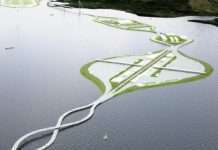Increasingly frequent marine heat waves are suppressing sea urchin reproduction at temperatures well below lethal levels, according to new research. This means that population crashes could occur more often than biologists have predicted, with significant implications for the delicate balance of kelp forest ecosystems along the Pacific Coast. The findings challenge the long-held assumption that heat-related urchin die-offs only happen at extreme temperatures.
The Unexpected Link Between Warming Waters and Reproductive Failure
For decades, marine biologists have observed fluctuating sea urchin populations following marine heat waves, but the exact mechanisms driving these cycles remained unclear. While extreme heat kills larvae and adults, the new study reveals that even moderate warming – around 18°C (64°F) – can shut down egg production in adult female urchins. This reproductive suppression occurs before mortality rates spike, meaning that a decline in young urchins can precede widespread death.
The research, led by Daniel Okamoto at the University of California, Berkeley, analyzed 30 years of coastal temperature and urchin population data, combined with laboratory experiments. The results demonstrate that sustained elevated temperatures, even below lethal thresholds, effectively halt egg production in both red and purple sea urchin species.
Why This Matters: The Kelp Forest Ecosystem at Risk
Sea urchins play a critical role in kelp forest ecosystems. In boom years, they can decimate kelp forests, turning vibrant underwater habitats into barren landscapes. This overgrazing starves other marine species that depend on kelp for survival. The new findings suggest that reproductive suppression from warming waters could exacerbate these cycles, leading to more frequent and severe kelp forest declines.
The study highlights a regional pattern: in Southern California, heat waves correlate with disappearing larval supplies, while in Northern California, increased larval numbers from warmer waters contribute to overgrazing. This underscores the complex interplay between temperature, reproduction, and ecosystem health.
The Mystery of Larval Dispersal and Population Swings
One of the biggest challenges in studying sea urchin populations is tracking their larval stages. Urchin larvae disperse into the open ocean for weeks or months, feeding on phytoplankton before settling back onto reefs. Scientists still lack a clear understanding of where these larvae go and why population patterns vary so dramatically.
The Critical Timing of Heat Waves
The timing of marine heat waves is also crucial. Summer warming is less impactful than prolonged heat events extending into fall and early winter (September-December), when adult females should be actively producing eggs. This suggests that sustained temperature stress during critical reproductive periods has the most significant effect on population dynamics.
Implications for Conservation and Management
Understanding the link between warming waters and reproductive failure has important implications for conservation and fisheries management. By recognizing that population crashes can occur before mass mortality, biologists and harvesters can better anticipate and respond to ecosystem shifts.
The study’s findings also suggest that reproductive suppression may be a widespread phenomenon in other marine species, including abalone, corals, oysters, and mussels. Further research is needed to assess the vulnerability of these organisms to sub-lethal temperature stress.
In conclusion, this research demonstrates that marine heat waves are disrupting sea urchin reproduction at lower temperatures than previously believed, threatening the stability of kelp forest ecosystems. The findings underscore the urgency of addressing climate change and mitigating its impact on marine life






































